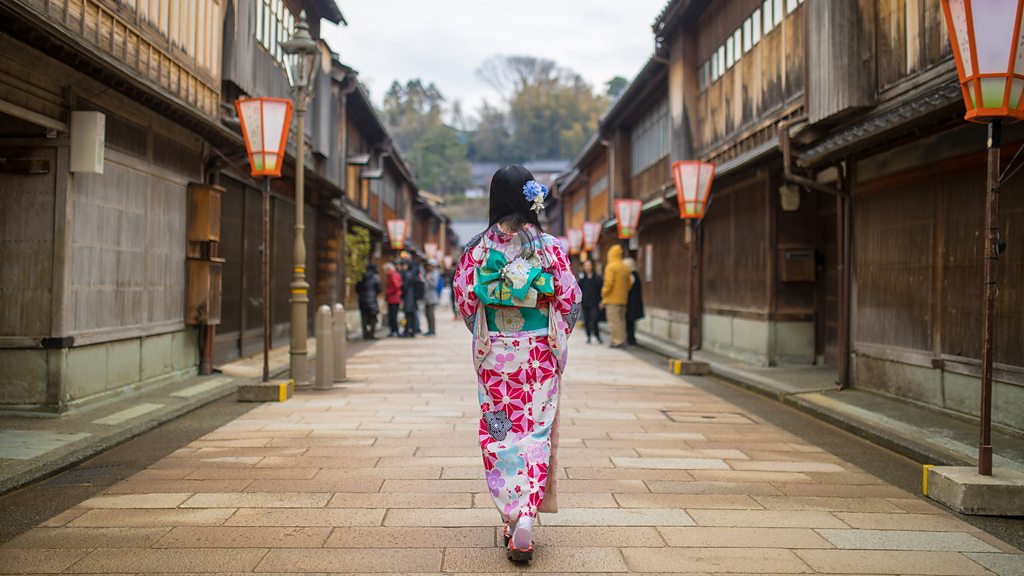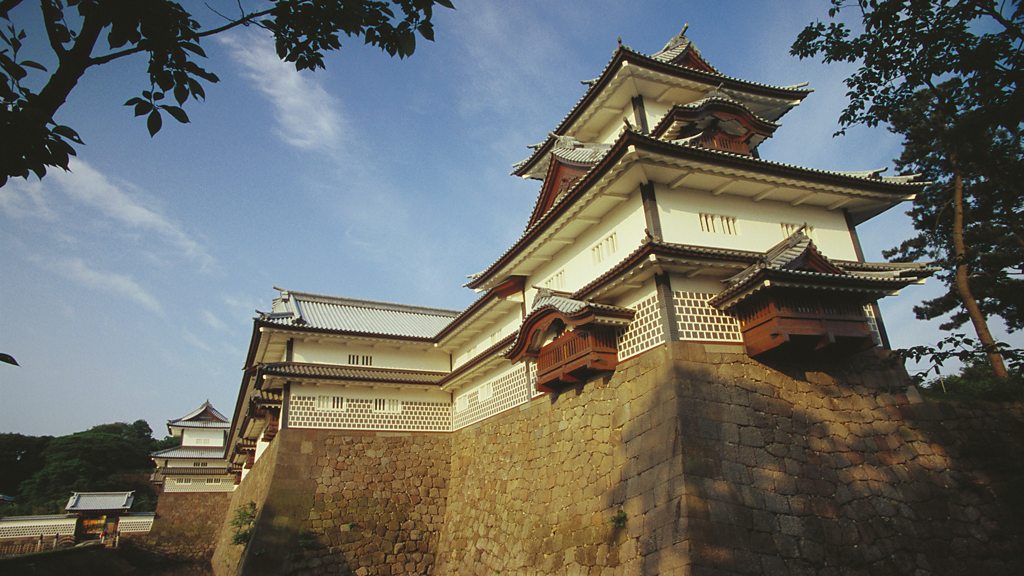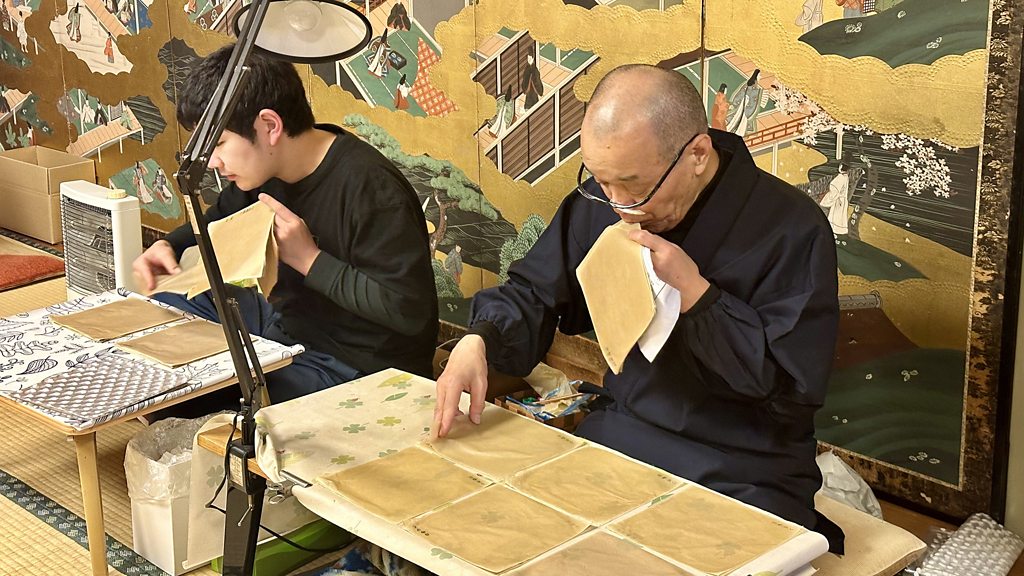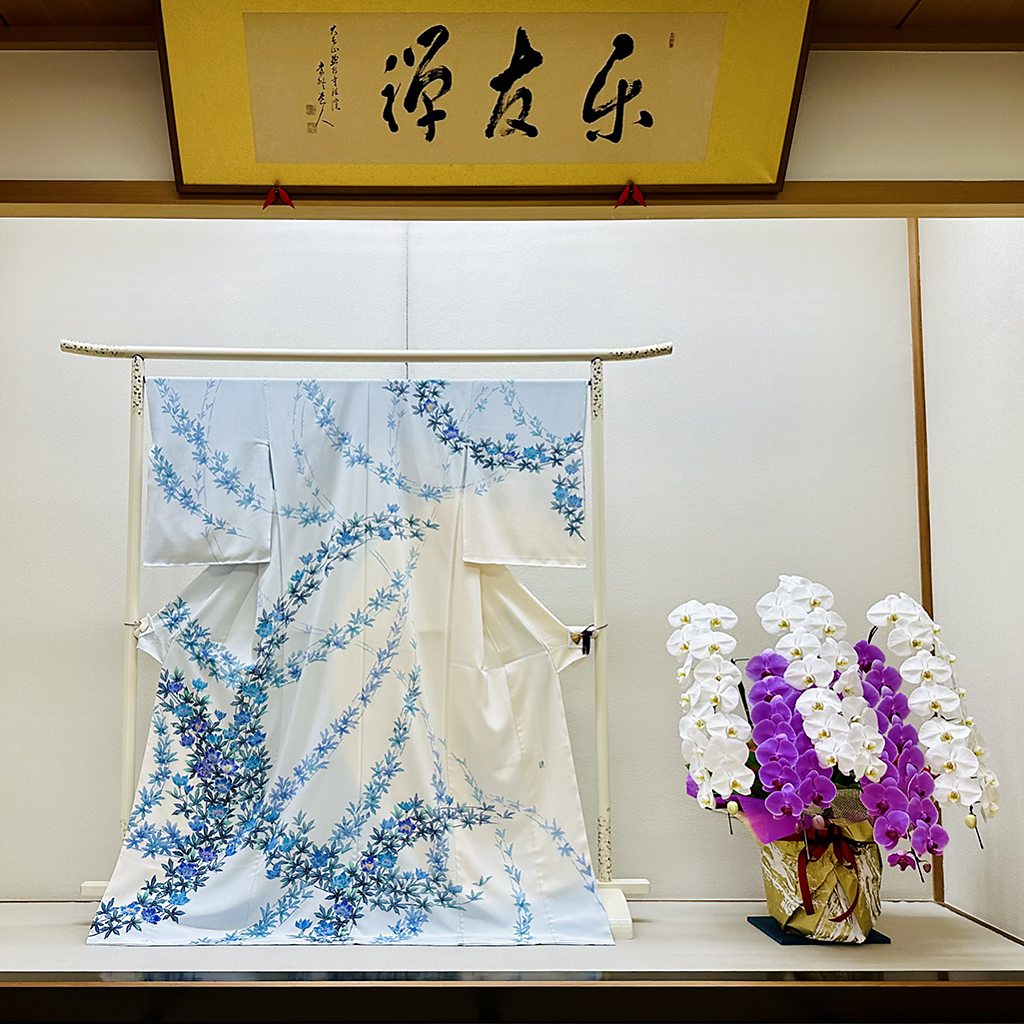Art
The true story of Japan’s samurai city that chose art over war

The breakout series Shōgun has renewed interest in the clashing swords and political maneuvering of Japan’s feudal era – and the city of Kanazawa is an excellent place to learn more.
Long after the end of Japan’s feudal era, there’s still a sense of power and prosperity in Nagamachi, a low-slung neighbourhood at the foot of Kanazawa Castle. Nagamachi’s grand residences, set behind thick earthen walls, were once home to high-ranking samurai retainers of the Maeda family, the powerful clan that ruled the Kaga domain (present-day Ishikawa and Toyama prefectures) from 1583 until the abolition of the shōgunate at the beginning of the Meiji era (1868–1912).
At the Nomura Residence, which is open to the public, I’m greeted first by an imposing full suit of armour and then pass through rooms filled with delicate craftsmanship towards a tearoom overlooking an ornamental garden. Finally, I end up in front of a display of swords and a letter from a daimyō (feudal lord) thanking his vassal for the gift of an enemy’s head. This juxtaposition of beauty and brutality is a reminder of the samurai’s seemingly paradoxical cultivation of the arts of both war and culture.
The breakout TV series Shōgun has renewed interest in the clashing swords and political manoeuvring of Japan’s turbulent Warring States period (roughly 1467-1615), when rival daimyō fought for control of the country. Bringing to life the political landscape of early 17th-Century Japan, the show reimagines the lead up to the establishment of the Edo period under the Tokugawa shōgunate, founded in 1603 by Ieyasu Tokugawa (inspiration for the fictional Lord Toranaga), which unified Japan and ended more than a century of constant warfare. A visit to Kanazawa, the capital of Ishikawa Prefecture, reveals the lasting legacy of a surprising tactic that helped to maintain that hard-won peace and stability.
A city of around 465,000 residents on Japan’s west coast, Kanazawa’s well-preserved Edo-period townscapes, like those of Nagamachi and its three geisha districts, have the kind of historical atmosphere and cultural appeal that have garnered many places in Japan the nickname “little Kyoto”. But, says Toshio Ōhi Chōzaemon XI, the 11th-generation head of a local family known for its rustic style of pottery, made without a wheel, “We are not trying [to be] that kind of city”.

He slides open a door to reveal a tearoom in the back of his Ōhi Museum, which, attached to an old samurai residence on the other side of the castle, displays works by each generation of Ōhi potter. He explains that compared to the Imperial Court culture of Kyoto, “We have [more] freedom. We don’t have to follow their tight traditions.” It’s this sensibility, which Ōhi calls the “samurai spirit”, that allows Kanazawa to preserve the beauty of its traditions while reinventing them for modern life.
In the 17th Century, when wealth was measured in koku (the amount of rice a domain produced), the Maeda were second only to the Tokugawa. “They were very powerful [and] had lots of resources [including] weapons,” says Jun Murakami, assistant director of the Kanazawa Utatsuyama Kogei Kobo, a craft school located in a hilly, wooded part of the city.
Murakami explains that the Maeda worried their arsenal would appear threatening to the ruling shōgunate – although the Maeda were by then allied with Tokugawa, he had been an adversary of the first Kaga lord Toshiie Maeda (inspiration for Sugiyama in the Shōgun series) who died in 1599. The Maedas’ solution was to embrace a kind of soft power: they redirected their weapon-making resources to crafts.
“It was like, ‘yes we are powerful, but we are not planning to make war’,” explains Murakami.
The Maeda established a craft-making workshop, Osaikusho, in Kanazawa Castle, inviting master craftspeople from around Japan to teach there and set about turning everyday objects into works of art. The school broke with strictly delineated craft-making tradition by inviting craftspeople of different disciplines to work together, thus moving traditions forward.

While pointing out pieces produced by the school, from a tissue box intricately decorated with metal inlay to gleaming katana swords that Osaikusho craftspeople transformed from lethal instruments to works of art, Murakami explains the Maeda’s lasting impact. If they “didn’t have the mentality of expanding crafts and using those resources to create this school,” he says, “maybe nowadays Kanazawa would not be as famous for its arts and crafts”.
Kanazawa has 22 kinds of traditional arts, including kutani-yaki (pottery), urushi (lacquerware), Kaga yūzen (silk kimono dying) and Kaga zougan (inlay metalwork). It is also the national capital of the production of kinpaku (gold leaf) and the many glittering things made with it, from Buddhist shrines to facial masks. Throughout history, Kanazawa’s promotion of crafts has been guided by a yearning for peace. Soon after World War Two, the Kanazawa College of Art was founded with the philosophy of “contributing to the peace of mankind through the creation of beauty”. In 2009, following a successful application that argued that the city could contribute to “international cooperation and world peace through the promotion of craftwork”, Unesco named Kanazawa Japan’s first City of Crafts and Folk Art.
Today, the contemporary challenges of a shrinking population and shifting culture mean that Kanazawa’s craft heritage is kept alive by a diminishing number of craftspeople. Nevertheless, guided by the dynamic attitude of its past feudal lords, the city is committed to preserving its crafts. In the spirit of the old Osaikusho, Kanazawa established the Kobo craft school in 1989. There, artists on scholarships study ceramics, lacquerware, silk dyeing, metalwork and glasswork. Murakami says that the school wants the students to challenge themselves, both in their art and attitudes. “They have to adapt to keep the tradition going [and meet] the needs of the modern times.”
More like this:
• Why you should visit Japan’s small but mighty ‘little Kyoto’
• The masters of a 5,000-year-old craft
• The Japanese philosophy for a no-waste world
And now artisans have opened their studio doors to visitors, allowing travellers to learn how they are expanding the possibilities of traditional crafts. A customisable programme organised by the city takes visitors into workshops, including that of Kaga yūzen artist Hitoshi Maida, who incorporates contemporary approaches, such as geometric designs, in his kimonos.

Comprising elements of ceramics and lacquerware, the tea ceremony represents a culmination of traditional craftsmanship – Kobo students are required to spend two years studying chadō (the way of tea) and must craft all their own elements, from bowls to kimono. Again, it’s a legacy of the Maeda, who were particularly fond of the tea ceremony and wanted Kanazawa to be known for its highest expression, which meant producing the highest quality of utensils.
In 1666, the Maeda invited the first Ōhi Chōzaemon to Kanazawa, where he found a soft clay in a neighbouring village. Building on the techniques he’d learned in Kyoto, he used this clay to develop the free-wheeling style of pottery known as Ōhi ware. Today, visitors to the Ōhi Museum can select a bowl from its collection and drink tea from it in a room designed by Japanese starchitect Kengo Kuma.
The delicate setting of a tea ceremony typically makes me feel like a clumsy interloper and, at the museum, this sense is only heightened by handling a valuable work of art. But I want to better understand the practice that I’ve come to see as the key to Kanazawa’s craft heritage. So, the next morning, as pink plum blossoms herald spring’s arrival, I head for Kenroku-en, one of Japan’s “great three” gardens, established by the Maeda in their castle grounds in the late 16th Century. Here, in the Kenrokutei building where fourth Kaga daimyō Tsunanori Maeda received visitors with tea, Oceáne Dubuc and Makiko Uda are helping open up the practice to Japan’s modern and increasingly diverse society.
“The first time I joined a Japanese tea ceremony, nobody explained what to do,” says Dubuc, who is from Toulouse, France. “I was really stressed so I couldn’t appreciate it.” Hoping to break through this barrier, Dubuc realised, “We should share this tradition for it not to die.” While she whips matcha, Uda adds that Japanese culture is often misunderstood, “even by Japanese people”. Dubuc sits next to me and gently explains each element, from what to say when receiving the bowl to turning it to admire its artistry. Peeling back the curtain like this, Dubuc says “let(s) people enjoy it”.
When you understand the tea ceremony, I realise that there is much to enjoy. Dubuc and Uda explain that chadō is about appreciating and showing gratitude for a moment in time that will never exist in quite the same way again. I start to understand why this tradition can promote peace or at least, more realistically, inner peace. The way of tea, Dubuc says, referring to the philosophy of Sen no Rikyū, who raised the tea ceremony to an art form in the 16th Century, is “harmony”.

Art
Ukrainian sells art in Essex while stuck in a warzone – BBC.com
[unable to retrieve full-text content]
Ukrainian sells art in Essex while stuck in a warzone BBC.com

Source link
Art
Somerset House Fire: Courtauld Gallery Reopens, Rest of Landmark Closed
The Courtauld Gallery at Somerset House has reopened its doors to the public after a fire swept through the historic building in central London. While the gallery has resumed operations, the rest of the iconic site remains closed “until further notice.”
On Saturday, approximately 125 firefighters were called to the scene to battle the blaze, which sent smoke billowing across the city. Fortunately, the fire occurred in a part of the building not housing valuable artworks, and no injuries were reported. Authorities are still investigating the cause of the fire.
Despite the disruption, art lovers queued outside the gallery before it reopened at 10:00 BST on Sunday. One visitor expressed his relief, saying, “I was sad to see the fire, but I’m relieved the art is safe.”
The Clark family, visiting London from Washington state, USA, had a unique perspective on the incident. While sightseeing on the London Eye, they watched as firefighters tackled the flames. Paul Clark, accompanied by his wife Jiorgia and their four children, shared their concern for the safety of the artwork inside Somerset House. “It was sad to see,” Mr. Clark told the BBC. As a fan of Vincent Van Gogh, he was particularly relieved to learn that the painter’s famous Self-Portrait with Bandaged Ear had not been affected by the fire.
Blaze in the West Wing
The fire broke out around midday on Saturday in the west wing of Somerset House, a section of the building primarily used for offices and storage. Jonathan Reekie, director of Somerset House Trust, assured the public that “no valuable artefacts or artworks” were located in that part of the building. By Sunday, fire engines were still stationed outside as investigations into the fire’s origin continued.
About Somerset House
Located on the Strand in central London, Somerset House is a prominent arts venue with a rich history dating back to the Georgian era. Built on the site of a former Tudor palace, the complex is known for its iconic courtyard and is home to the Courtauld Gallery. The gallery houses a prestigious collection from the Samuel Courtauld Trust, showcasing masterpieces from the Middle Ages to the 20th century. Among the notable works are pieces by impressionist legends such as Edouard Manet, Claude Monet, Paul Cézanne, and Vincent Van Gogh.
Somerset House regularly hosts cultural exhibitions and public events, including its popular winter ice skating sessions in the courtyard. However, for now, the venue remains partially closed as authorities ensure the safety of the site following the fire.
Art lovers and the Somerset House community can take solace in knowing that the invaluable collection remains unharmed, and the Courtauld Gallery continues to welcome visitors, offering a reprieve amid the disruption.
Art
Sudbury art, music festival celebrating milestone

Sudbury’s annual art and music festival is marking a significant milestone this year, celebrating its long-standing impact on the local cultural scene. The festival, which has grown from a small community event to a major celebration of creativity, brings together artists, musicians, and visitors from across the region for a weekend of vibrant performances and exhibitions.
The event features a diverse range of activities, from live music performances to art installations, workshops, and interactive exhibits that highlight both emerging and established talent. This year’s milestone celebration will also honor the festival’s history by showcasing some of the artists and performers who have contributed to its success over the years.
Organizers are excited to see how the festival has evolved, becoming a cornerstone of Sudbury’s cultural landscape. “This festival is a celebration of creativity, community, and the incredible talent we have here in Sudbury,” said one of the event’s coordinators. “It’s amazing to see how it has grown and the impact it continues to have on the arts community.”
With this year’s milestone celebration, the festival promises to be bigger and better than ever, with a full lineup of exciting events, workshops, and performances that will inspire and engage attendees of all ages.
The festival’s milestone is not just a reflection of its past success but a celebration of the continued vibrancy of Sudbury’s arts scene.

-

 News11 hours ago
News11 hours agoB.C. to scrap consumer carbon tax if federal government drops legal requirement: Eby
-

 News11 hours ago
News11 hours agoA linebacker at West Virginia State is fatally shot on the eve of a game against his old school
-

 Sports12 hours ago
Sports12 hours agoLawyer says Chinese doping case handled ‘reasonably’ but calls WADA’s lack of action “curious”
-

 News22 hours ago
News22 hours agoReggie Bush was at his LA-area home when 3 male suspects attempted to break in
-

 News12 hours ago
News12 hours agoRCMP say 3 dead, suspects at large in targeted attack at home in Lloydminster, Sask.
-

 Sports6 hours ago
Sports6 hours agoCanada’s Marina Stakusic advances to quarterfinals at Guadalajara Open
-

 News11 hours ago
News11 hours agoHall of Famer Joe Schmidt, who helped Detroit Lions win 2 NFL titles, dies at 92
-

 News12 hours ago
News12 hours agoBad weather and boat modifications led to capsizing off Haida Gwaii, TSB says




















